Don’t be fooled by the familiar looks of the new Audi R8. It might, even by the acknowledgement of Audi head of research and development Ulrich Hackenberg, appear a lot like a facelifted version of the first-generation model launched in 2006. But the truth is that everything about the second-generation model has changed in one way or the other.
Read our Audi R8 V10 review here
That even includes the philosophy behind how Audi will position the launch line-up to reflect a more performance-led approach this time around, offering the R8 exclusively with a heavily revised version of its naturally aspirated 5.2-litre V10 in combination with a standard seven-speed dual-clutch automatic gearbox from the start of UK sales.
If there is one statistic that immediately sums up the advances made to Ingolstadt’s four-wheel-drive performance flagship, it is the deeply impressive 0-62mph time claimed for the new top-of-the-line R8 V10 Plus: 3.2sec. That’s 0.3sec faster than its predecessor and it makes this the fastest-accelerating road car that Audi has placed into series production.
The top speed has also improved, by 8mph, aided in part by a new aerodynamic package that allows the mid-engined coupé to generate 130kg of downforce at its new maximum of 205mph.
The addition of contemporary fuel-saving functions for the first time, including automatic stop-start and a coasting function that idles the engine on extended periods of trailing throttle, is claimed to bring about a double-digit improvement in economy.
We will know a lot more when we actually get to drive the new coupé later in the year, but for now, after a day riding shotgun in a prototype around the Ascari circuit in Spain, it is safe to conclude that the new R8 moves the game along, not only in pure performance terms but also in terms of its on-the-limit dynamics.
Advances in high-definition display technology and a laser lighting option also enhance its reputation as one of the best-equipped supercars money can buy, providing it with renewed appeal following its predecessor’s successful eight-year reign at the top of the Audi line-up, during which time it garnered more than 26,000 sales worldwide in coupé and Spyder bodystyles.
To underscore just how special Audi thinks the R8 really is, the company is establishing a new showcase assembly line at its Neckarsulm factory in Germany. The so-called Boellinger Hoefe site has been conceived exclusively around the new car, which will initially be sold in coupé guise with a successor to the Spyder due out in 2016.
When you first see the new R8 up close, it doesn’t jump out and hit you as being an all-new model. The longer you look at it, however, the more obvious the differences become.
It's not long until you pick up on the various nuances in its aluminium bodywork, including its reshaped grille, more angular headlights, prominent shoulder line, heavily structured flanks and larger side ducts, at which point you begin to see it for what it is: an outwardly sharper yet more elegant car than the one it replaces.
The exterior detailing is quite superb. Nowhere is this more apparent than in the design of the headlights, which use standard LED graphics but can be ordered with advanced new laser beams, as showcased on the final version of the old R8, the LMX.
At 4444mm, the new model is the same length as the old R8, but it’s 39mm wider, at 1944mm, and height has been reduced by 9mm to 1241mm.
Audi has enhanced key elements of the car’s predecessor in an evolutionary process aimed at retaining its intrinsic character. Many of the developments brought to the new car were set in place with the launch of the Lamborghini Huracán, with which it shares various parts of its body structure, a large percentage of its underpinnings and key areas of its driveline.
The most fundamental change is the way in which the new R8 is constructed. Hackenberg explains: “Given the strict weight targets we were aiming at, it was no longer sufficient to construct the new car wholly out of aluminium. We have adopted a new multi-material spaceframe in which various components, including the rear bulkhead and parts of the floorpan, are now made out of carbonfibre-reinforced plastic.”
The new structure is described as being central to the new R8’s performance gains. It offers a 40% improvement in static rigidity along with weight savings that enable the car to hit the scales at 1454kg in V10 Plus guise - 66kg less than its predecessor but still 32kg more than the Huracán.
The suspension continues with standard steel springs and an optional Magneride package that offers continuously variable damping control. Although there is not a single carried-over component within the aluminium-intensive underpinnings, the basic elements remain the same, with double wishbones and anti-roll bars at each end.
In an indication of just how sound Audi’s Quattro division considered the original concept, the new R8 has the very same 2650mm wheelbase as the old model, as well as the same 1640mm front and 1595mm rear tracks.
Hackenberg reveals that relative spring rates have been dialled back a little in pursuit of improved absorption of small bumps and the damping has been stepped up slightly for what he calls superior body control.
The tendency of the earlier R8 to understeer prematurely on less than smooth surfaces has apparently also been seen to with an incremental increase in wheel travel and bushings up front, introducing what the Audi R&D boss describes as enhanced on-the-limit compression and rebound qualities. “It turns in with greater precision and carries greater speed through corners,” he says.
Perhaps more crucial are the changes to the steering, which eschews the hydraulic operation for an all-new electro-mechanical system. It comes as standard with a fixed ratio but variable weighting, although Audi is already talking up the qualities of an optional set-up, which mates a variable ratio with variable weighting.
The new R8 sticks with standard 19in rims shod with 235/35 ZR19 front and 295/30 ZR19 rear tyres. As before, though, most buyers are likely to go for the optional 20in wheels and 245/30 ZR20 front and 305/30 ZR20 rear tyres, as fitted to the prototype on hand in Ascari.
Unlike with the original R8, Audi will launch the new model with a strategy aimed at highlighting its ultimate performance potential right from the start of sales.
“We are not in the supercar ranks to simply make up the numbers,” says Hackenberg. “I see no reason why we shouldn’t launch with our most potent model first. It sets a marker and provides an excellent basis for us to build upon with further variants planned for the future.”
So the earlier base engine, the 4.2-litre V8, has been overlooked for the initial line-up. Instead, buyers will be offered a revised version of the naturally aspirated 5.2-litre V10 petrol engine used to spectacular effect in the old R8.
Fitted with a revised exhaust system and a whole raft of yet-to-be-specified changes, the 90deg unit now delivers an added 15bhp and 7lb ft in standard tune, with new peaks of 532bhp at 8000rpm and 398lb ft at 6500rpm in the R8 V10.
The headline act in the initial line-up, though, is the rapid R8 V10 Plus. It runs a more highly strung version of the V10 with the same output as in the Huracán: 601bhp at 8150rpm, along with 413lb ft at 6500rpm. This gives the range-topping R8 59bhp and 15lb ft more than its predecessor. Coupled with the lower kerb weight, it also extends the power-to-weight ratio to 413bhp per tonne.
The dual-clutch automatic gearbox from the old R8 has also been sharpened for service in the new model, gaining revised software for faster and smoother shifts, along with a series of tweaks to enable a new coasting function and what is described as improved stop-start operation. The seven-speed unit is the only gearbox available on the new R8, offering both manual and automatic operation and no fewer than seven different driving modes.
Driveline changes go far beyond revised gearbox software, though. Audi has ditched the viscous-coupling-equipped syncro four-wheel drive system of the old R8 for an electro-hydraulically operated multi-plate clutch arrangement on the new model.
As well as offering more intuitive operation, it allows full variation of drive, with up to 100% able to be transferred to the front or the rear as required. As before, the new car receives a rear mechanical locking differential in V10 guise.
The adoption of the new four-wheel drive system was, in part, driven by plans for a new electric-powered e-tron R8. Set to make its debut alongside its petrol-engined siblings at the Geneva show next month, the e-tron version has a range of “over 400km” (249 miles), according to Hackenberg.
Stepping into the R8 V10 Plus prototype reveals a raft of new details, such as an impressive new high-definition instrument display that offers a series of digital templates from which to extract all the vital information.
There's also a terrific new flat-bottomed, multi-function steering wheel with dials and knobs used to alter the driving modes, and superb new seats that are mounted closer to the floor and offer greater lateral support than those used before.
The newly designed dashboard is of typically high quality. It’s also a superbly functional interface that continues to be heavily concentrated around the driver. And although it accommodates only two people, the new R8 can’t be accused of lacking practicality against its supercar rivals.
As before, a handy bench behind the seats is claimed to hold up to 120 litres of luggage, and a cubbyhole in the nose swallows an additional 104 litres.
Our pleas for a brief spell behind the wheel are predictably brushed aside. But with Audi sportscar regular and former Autocar Sideways Challenge champion Frank Stippler on hand to carry out the driving duties, there is still much to discover from the passenger seat.
As he thumbs the start button on the lower right-hand side of the steering wheel, presses the button to select Sport mode and takes an exploratory prod of the throttle, the engine erupts in a wild crescendo of soaring revs that instantly fill the pit garage, sending many on hand scurrying for cover.
It may be pitched as an everyday supercar, but there’s nothing everyday about the sound it makes, even at a standstill.
Heading on to the track for the first of more than a dozen laps, the engine gives the impression of being as sweet as ever. Despite the identical output, the V10 used in the new range-topping R8 does not run the same tuning as it does in the Huracán.
However, it proves every bit as compelling and determined in the Audi as it does in the Lamborghini when extended up towards the redline in first, second and third gears along the back straight, with rabid response through the mid-range and more underlying smoothness up high than you would credit in a naturally aspirated engine delivering more than 115bhp per litre.
The first lap is taken fairly gingerly as heat is built up in the tyres. But what really grabs me as speeds begin to rise is the apparent directness of the new electro-mechanical steering and the sheer agility it imparts on the handling.
The prototype we’re in is fitted with the optional variable-ratio system, and the angles required to turn the new R8 in to the tighter corners of the Ascari circuit are considerably less than those of the old hydraulic set-up. “There is greater immediacy as you come off centre and it requires significantly less effort,” says Stippler later. “Whereas before you’d need a good quarter turn of lock to get it to settle in to the apex, it now asks for less than an eighth on most corners here. ”
Surprise number two is the improvement in the quality of the gearshift. Audi says it exhaustively benchmarked all rival dual-clutch systems before committing to the software used by the largely carried-over gearbox in the new R8, coming to the conclusion that the earlier system lacked the smoothness and speed of the best of the competition, most notably on downshifts.
The result is a smoother but significantly faster shift action that adds to the perception of the greater performance potential opened up by the extra power and lighter mass of the new R8.
A couple of laps in, Audi’s resident wheelman lets rip and the outstanding balance of Audi’s new performance hero comes clearly into focus.
As with the old R8, this new one boasts a weight distribution of 42% front, 58% rear. But with a faster-acting all-wheel drive system apportioning drive between each axle and an improved rear locking differential, its ability to carry big speed through corners is quite sensational.
Although there appears still to be a touch of high-speed understeer on the way in to corners, the tail feels tremendously planted at all times, allowing Stippler to get on the throttle early and rely on the new driveline hardware to place the engine’s reserves to the track’s surface with amazing efficiency.
As for the acceleration and noise that the new R8 makes at full tilt, it is nothing short of electrifying.
The R8 V10 Plus is entering a highly competitive market, but if our brief outing at Ascari is anything to go by, it has qualities to stand its ground against such highly coveted rivals as the newly unveiled Ferrari 488 GTB, the Huracán, McLaren 650S and Porsche 911 Turbo S.
The true test of its ability will come later this year when we’re able to drive it for ourselves, but it is already clear that this new model is a big step forward in all areas.
Audi R8 V10 Plus
Price £130,000 (est); Engine V10, 5203cc, petrol; Power 601bhp at 8150rpm; Torque 413lb ft at 6500rpm; Gearbox 7-spd dual-clutch automatic; Kerb weight 1454kg; 0-62mph 3.2sec; Top speed 205mph; Economy TBC; CO2/tax band TBC
Get the latest car news, reviews and galleries from Autocar direct to your inbox every week. Enter your email address below:

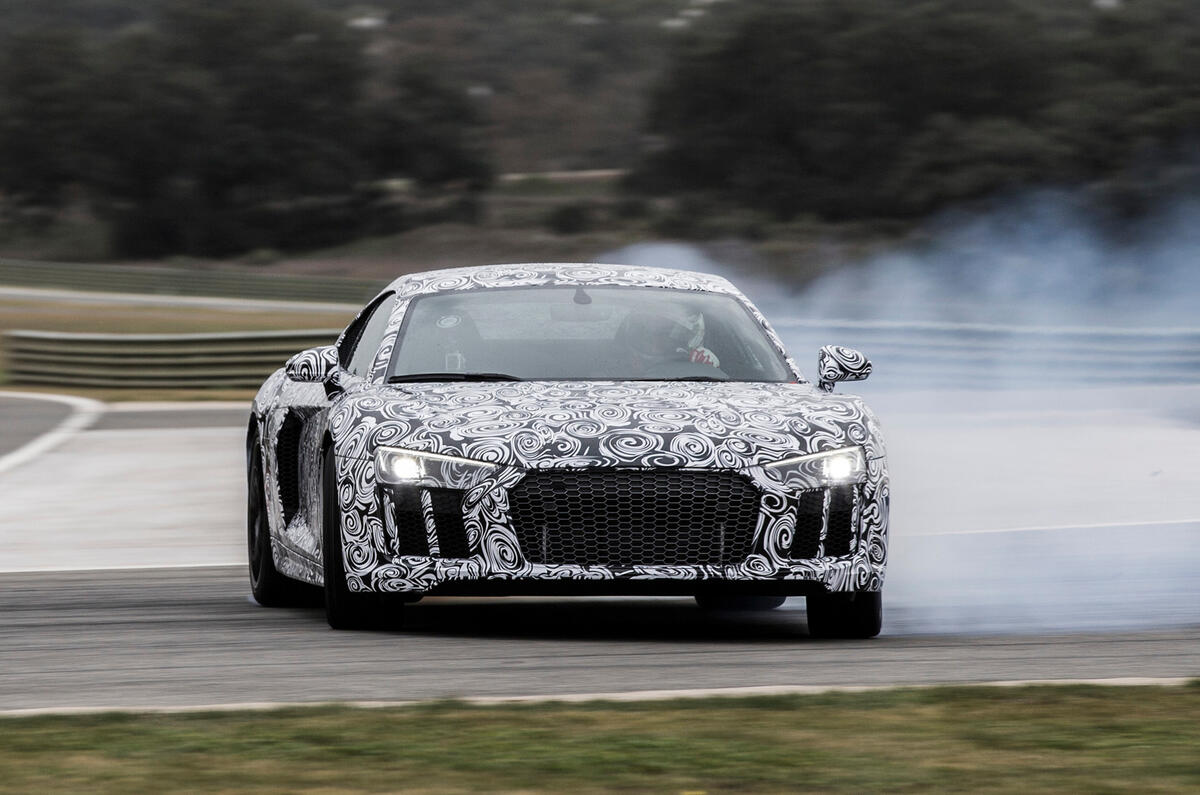
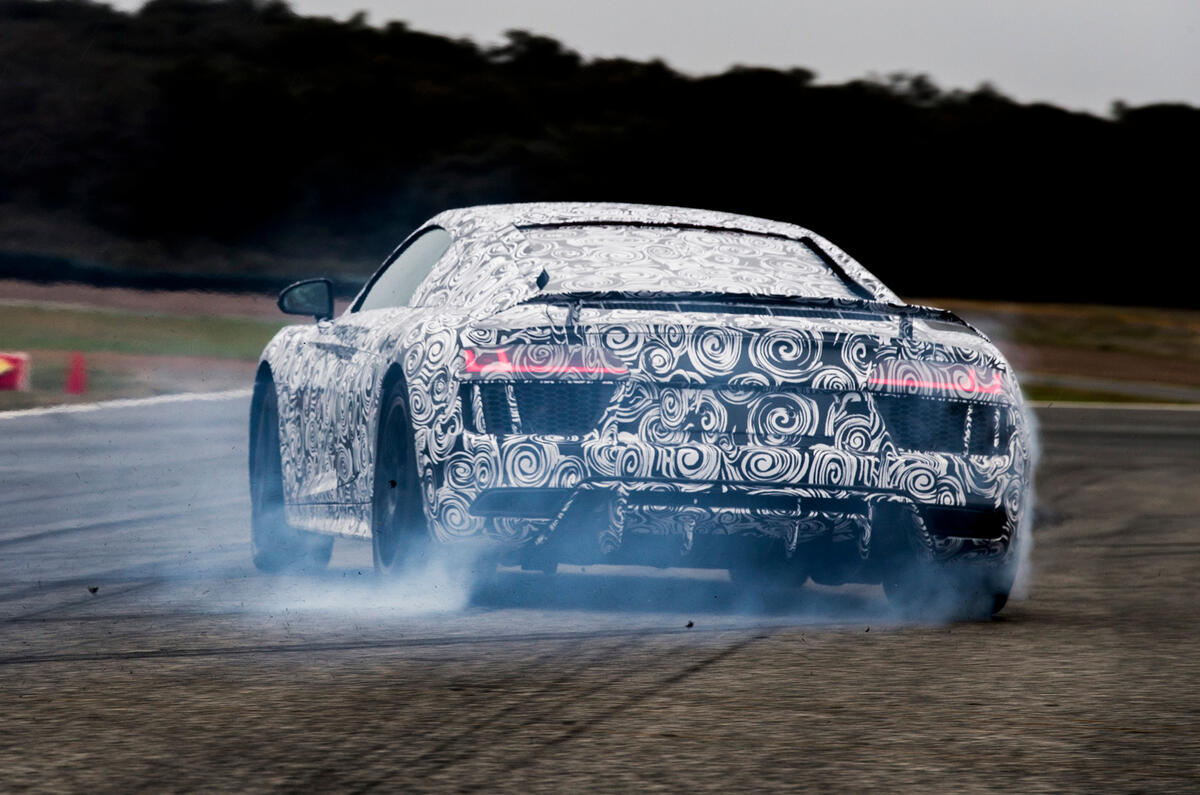
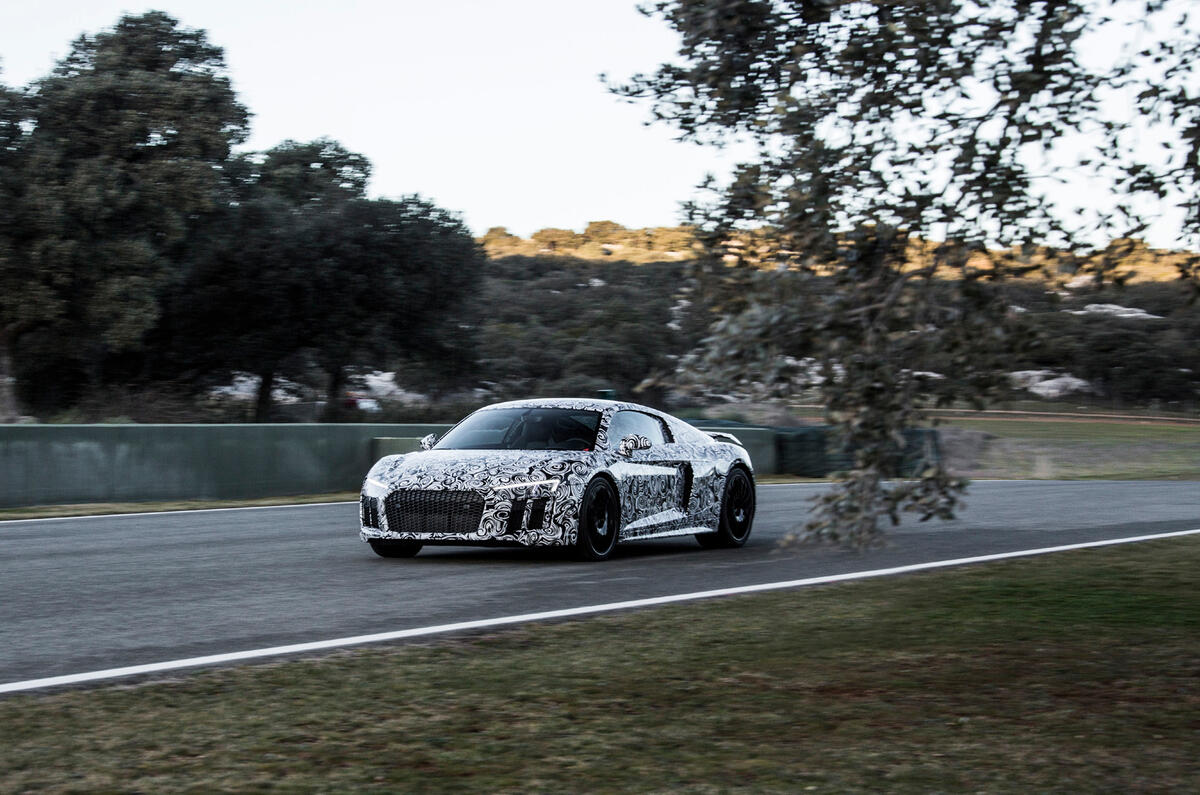
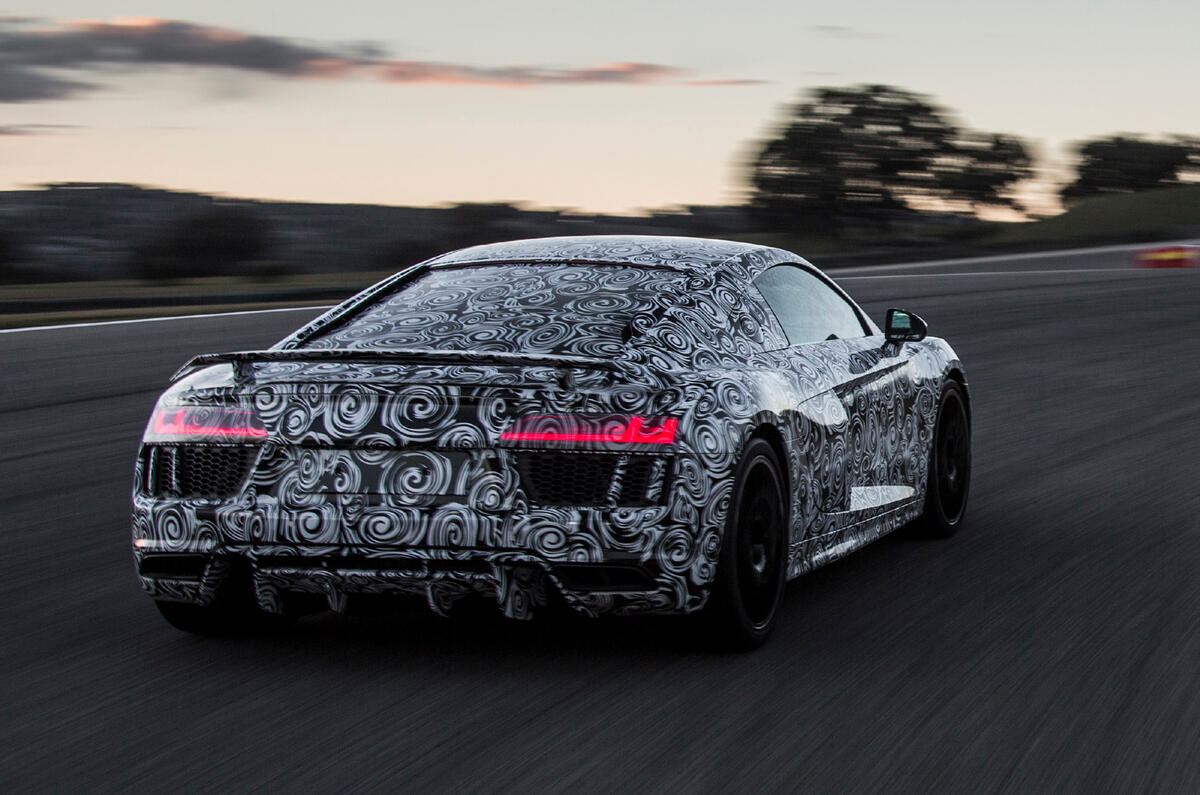
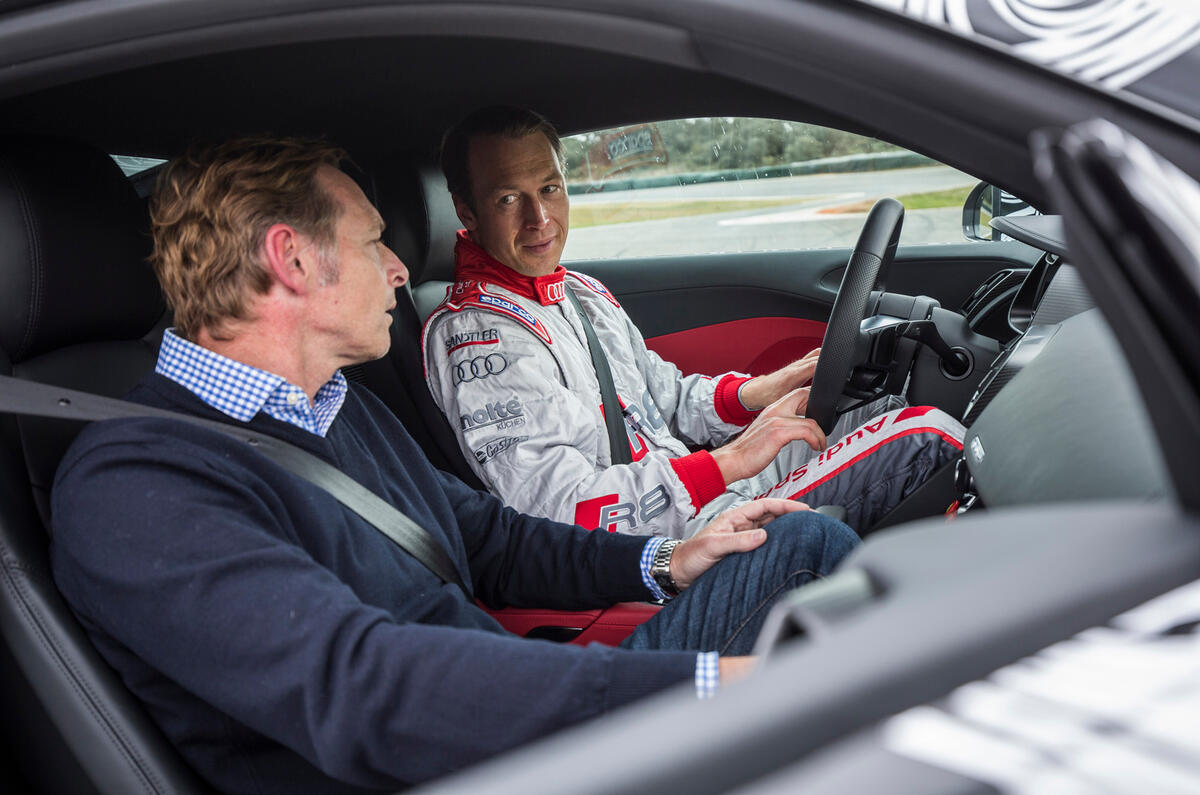
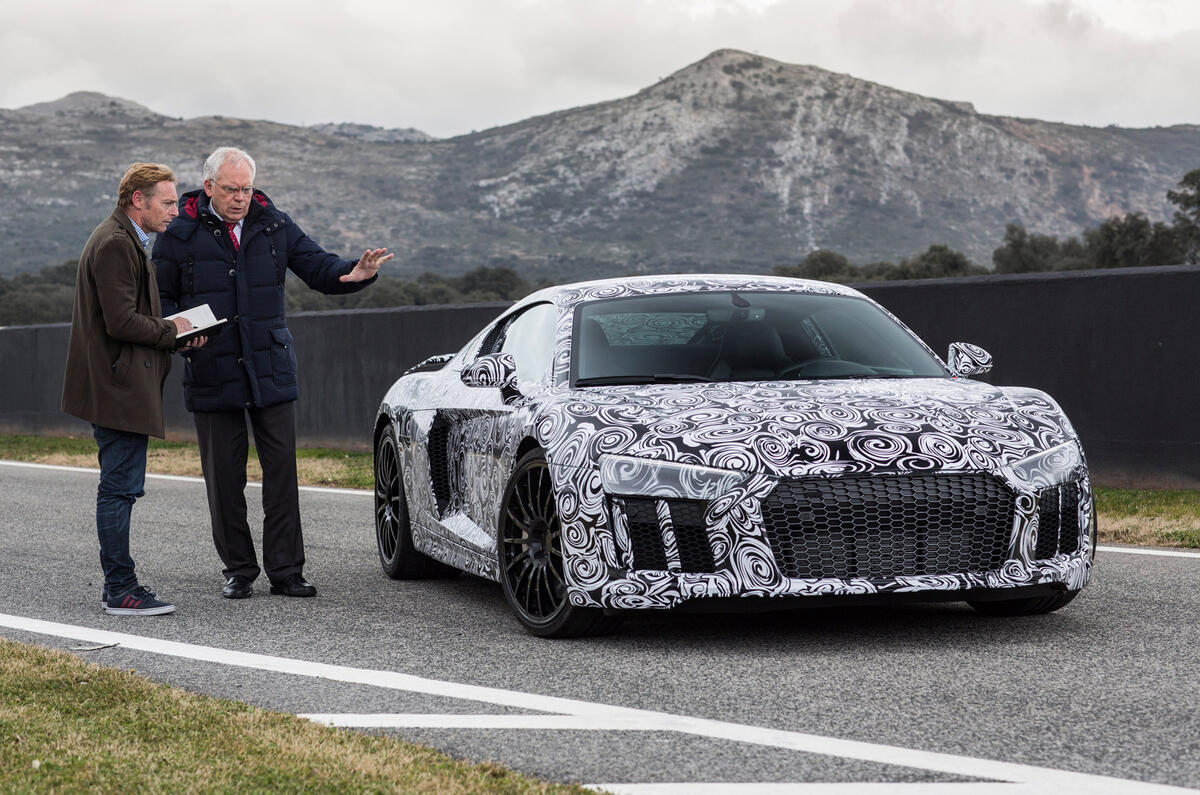
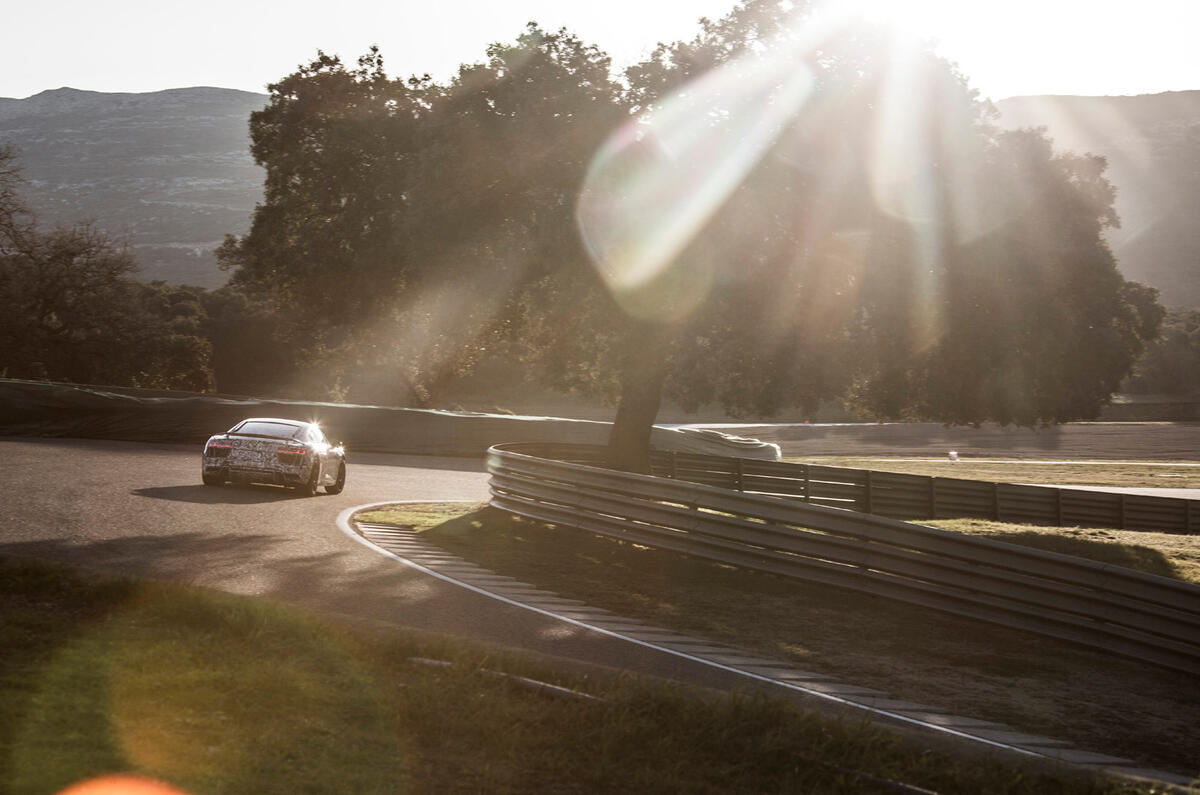
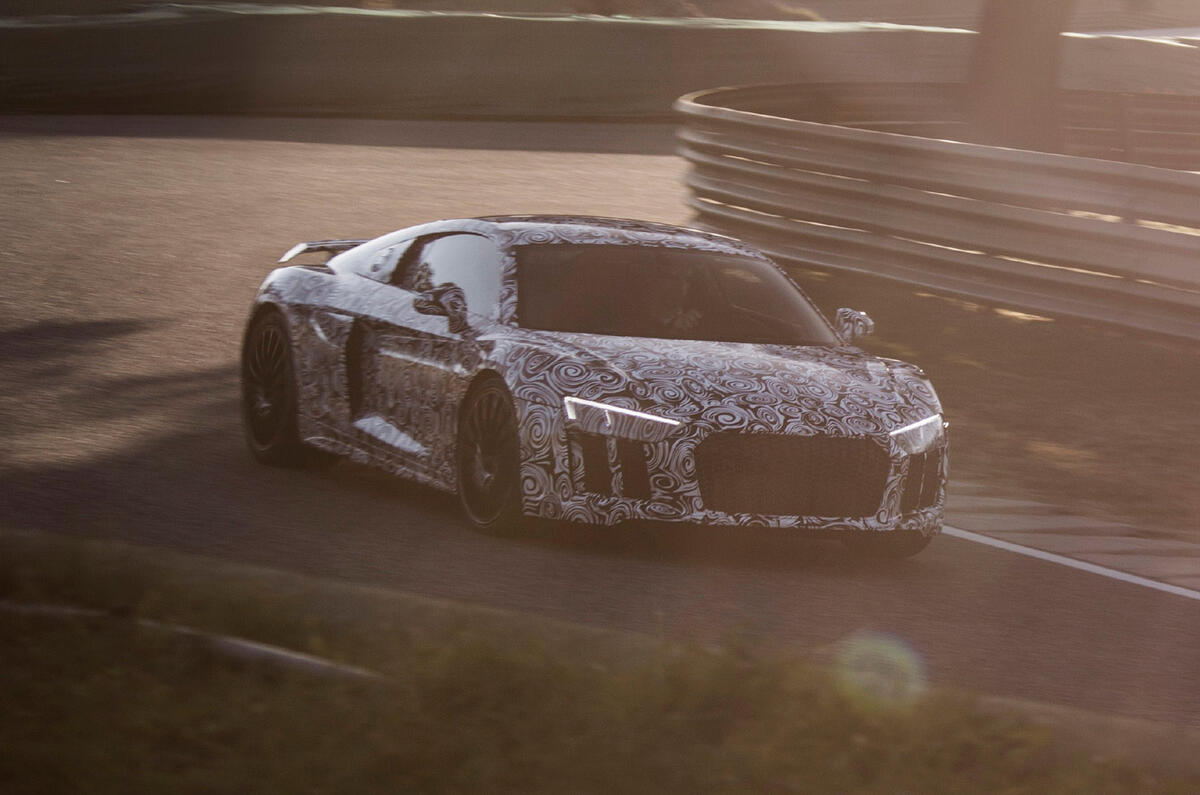
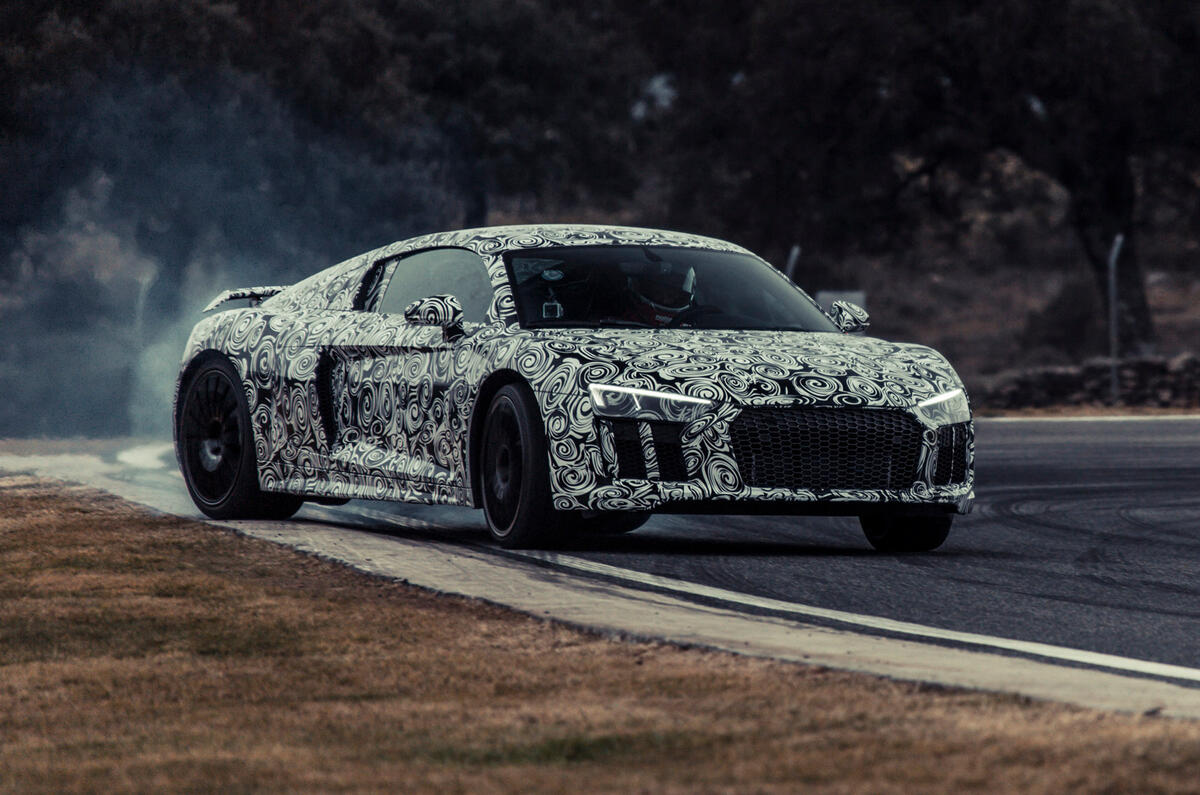
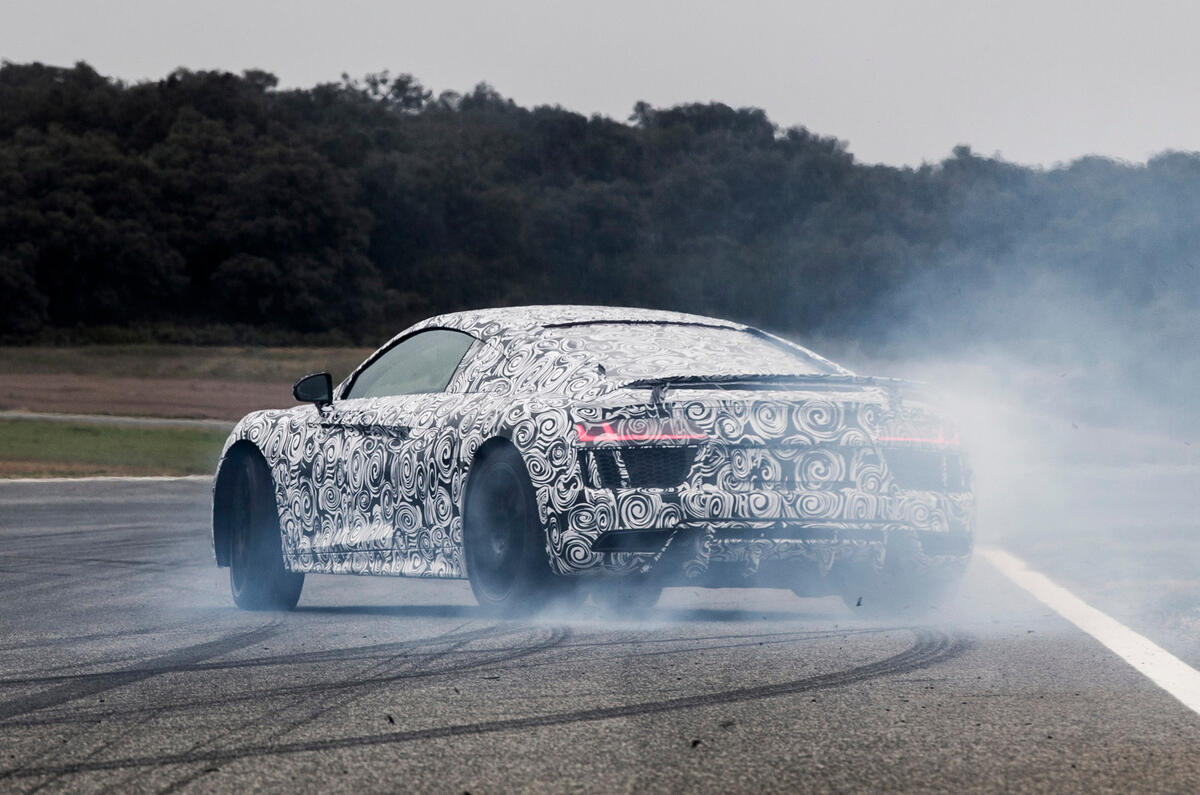
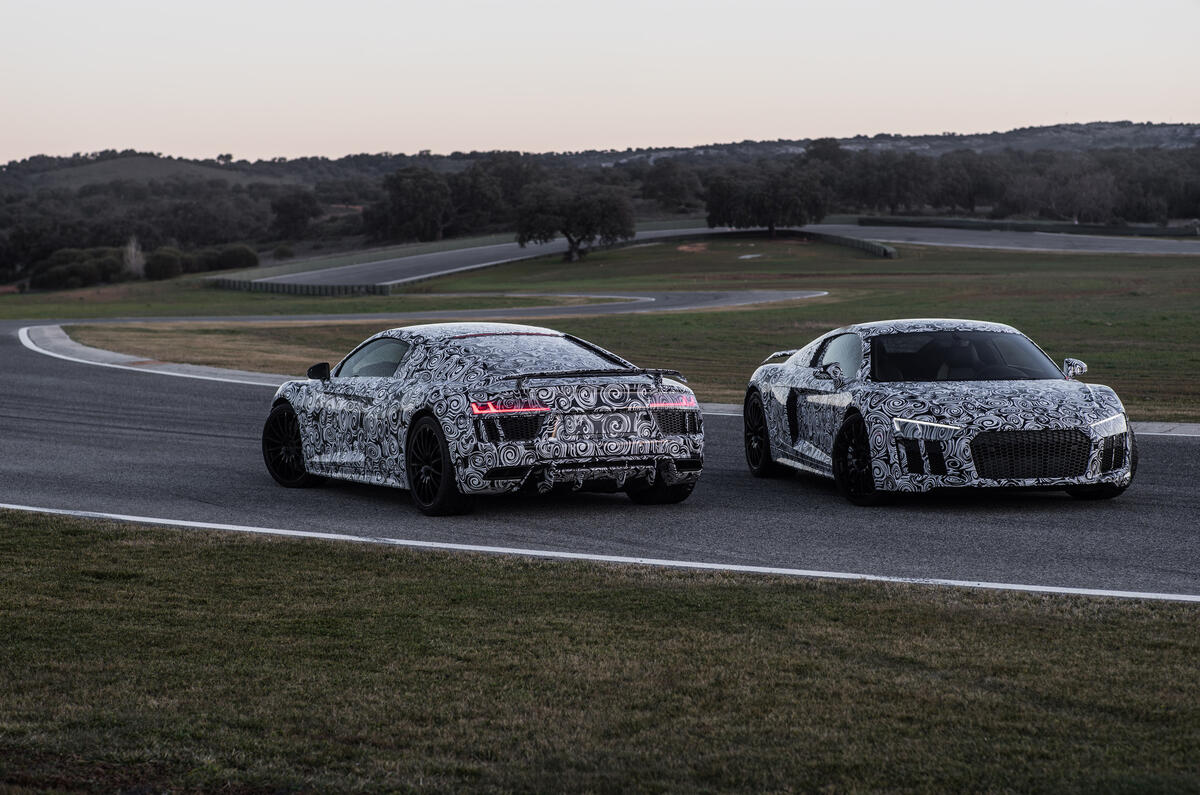


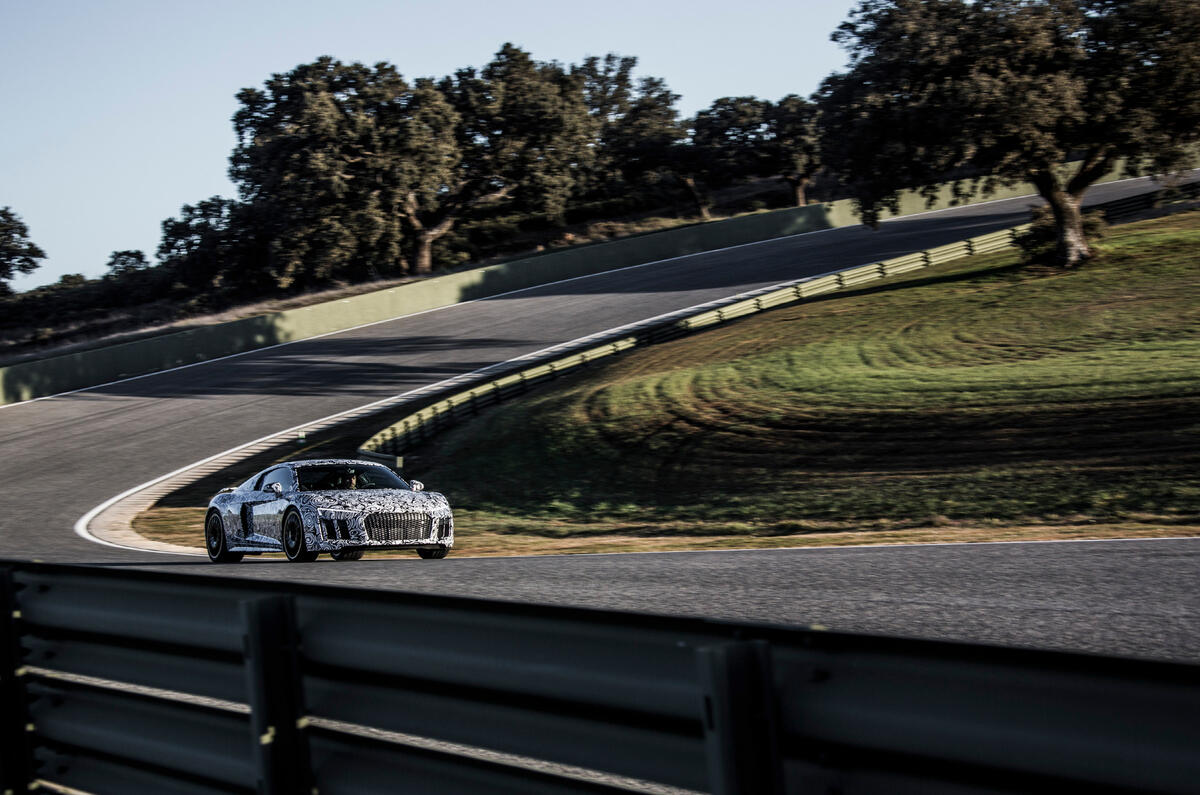
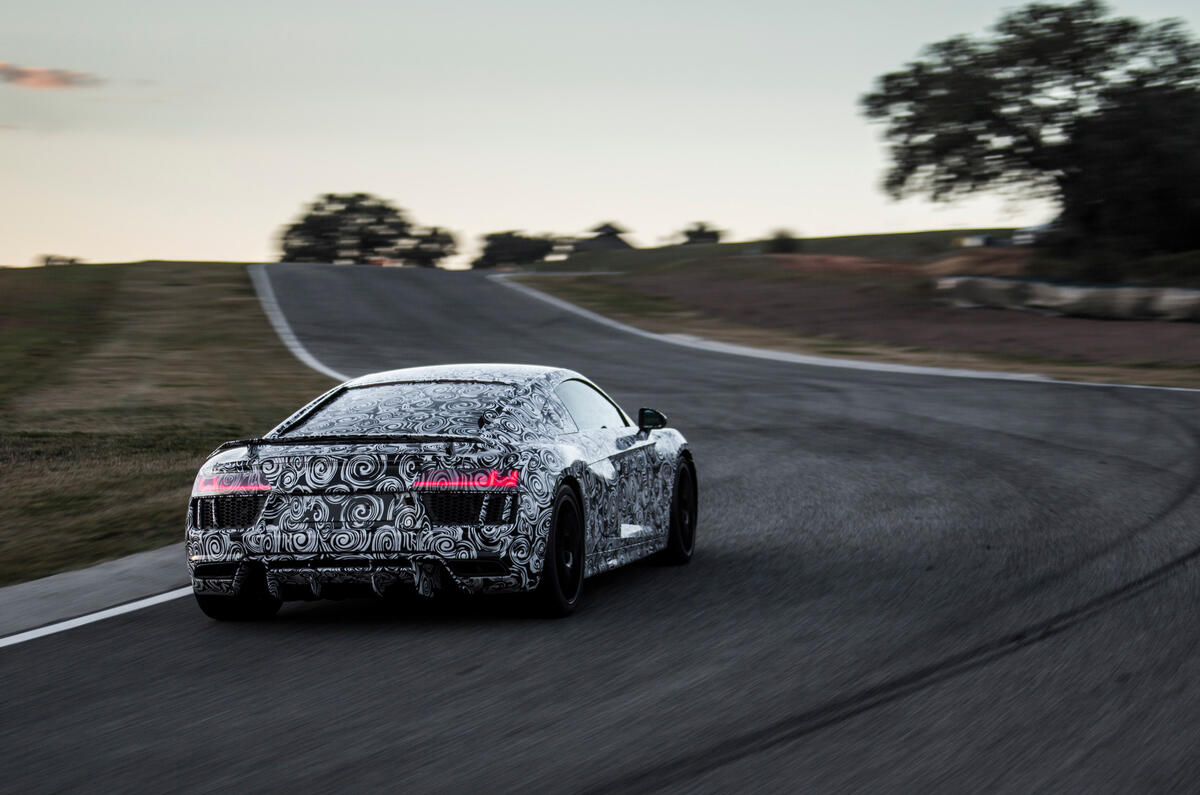
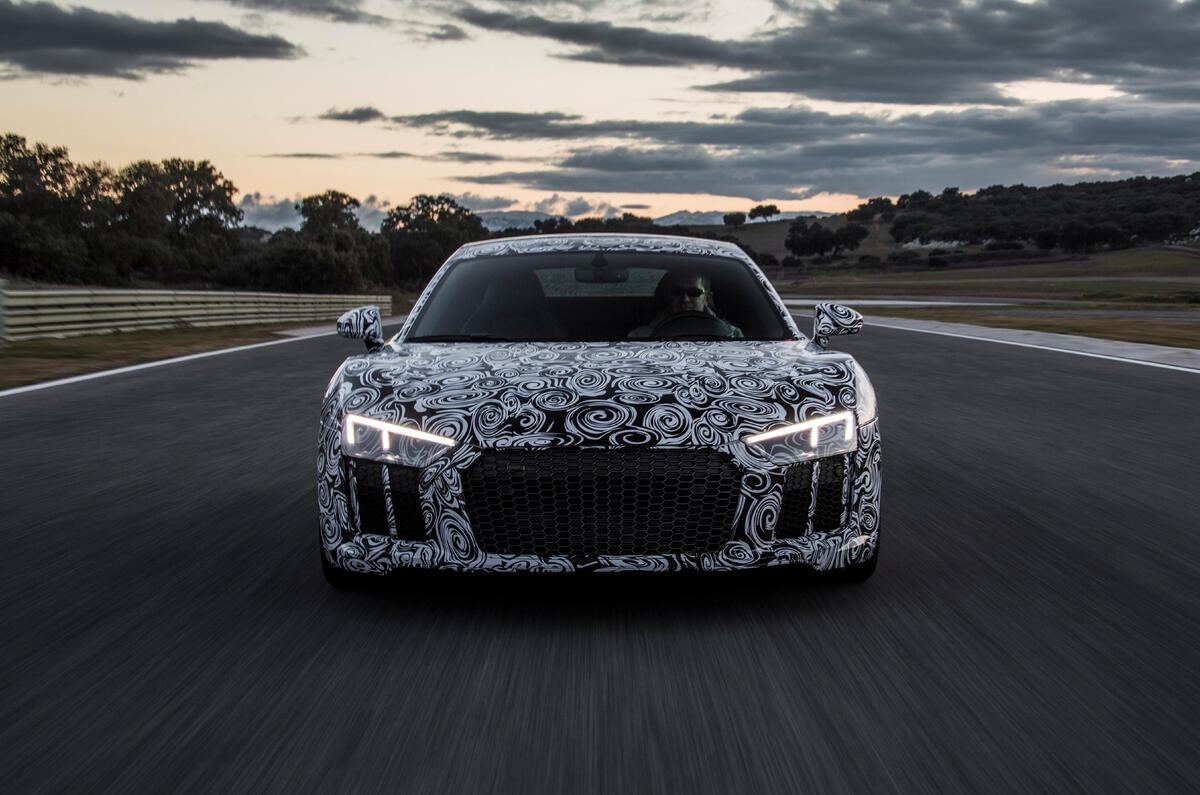
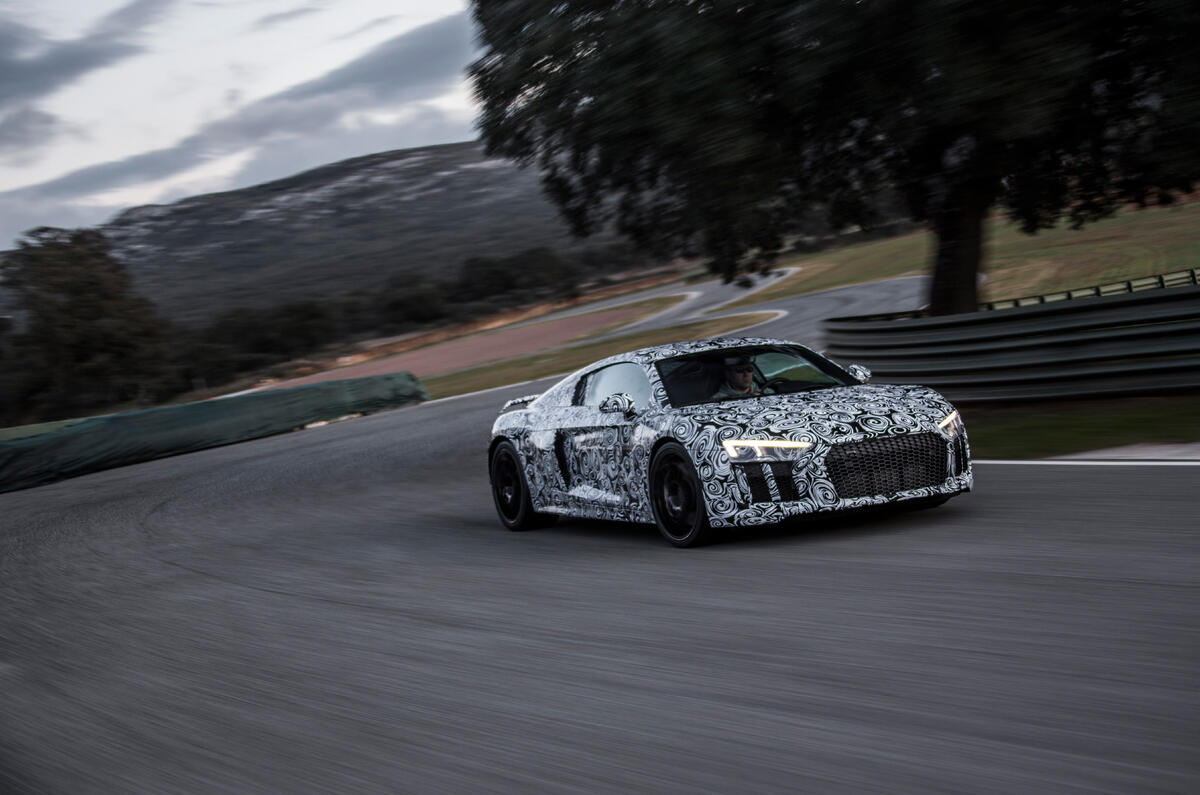
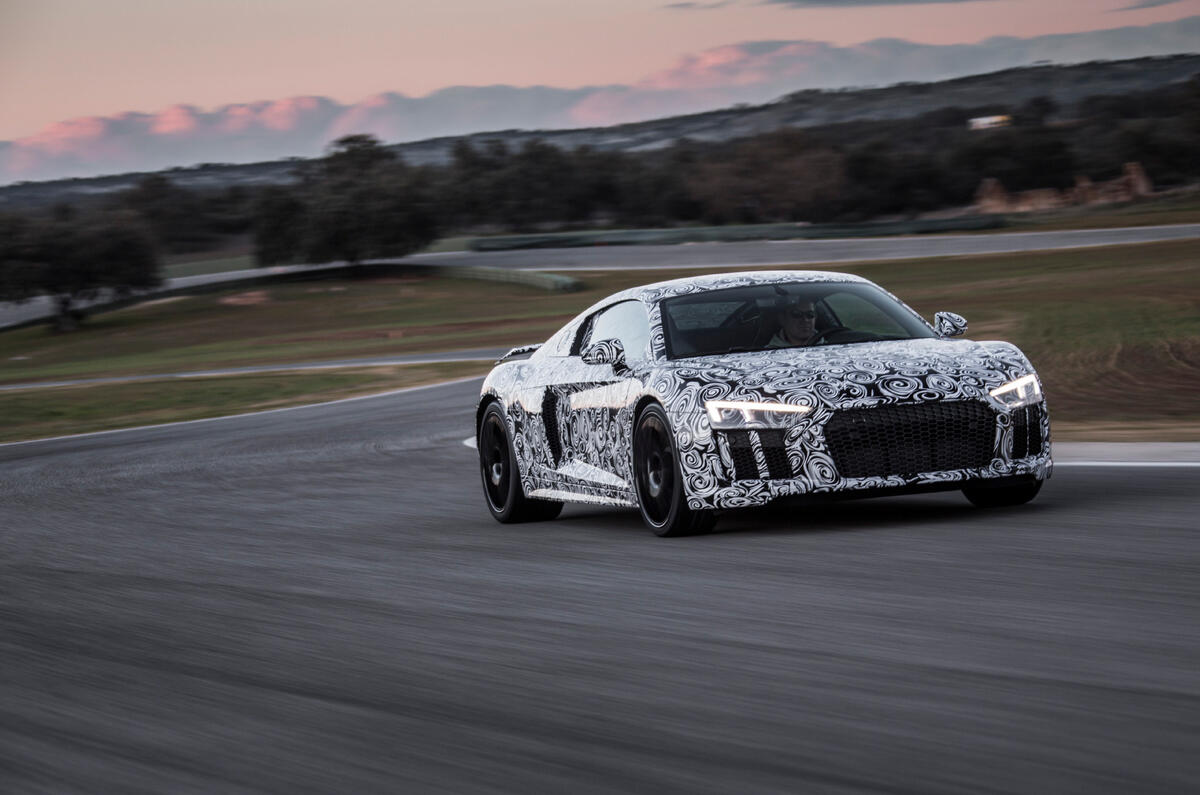

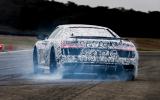
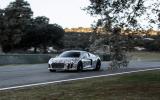
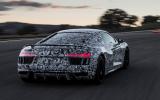

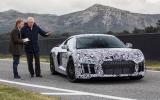
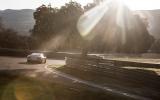
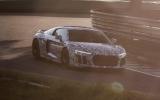
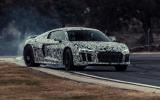


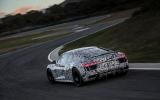
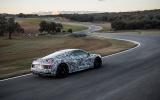
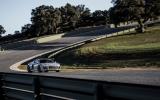
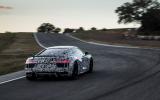
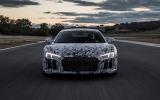
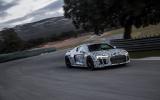
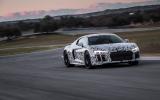


Join the debate
Add your comment
The car's definitely not the star
point made except ...
Thanks xxxx...
from the front I think they will probably be fine, but from the rear I feel that the hatchback/coupe tailgate appearance renders it no more than a large TT. This latest round of pictures included here look (apart from the swirly skin) pretty much it, cant see any taped on panels etc etc. The old R8 had an appearance largely all of its own, now just another model in the VAG range.